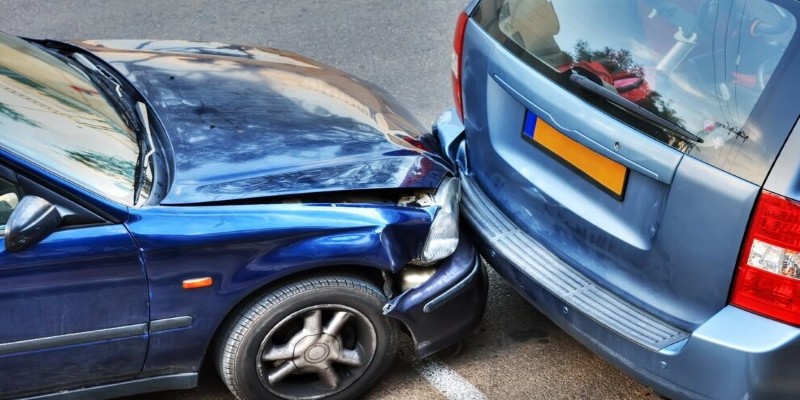Understanding Car Insurance Deductibles And Coverage Limits
Car insurance is an essential part of owning a vehicle. It provides financial protection in the event of an accident, theft, or damage. However, the specifics of a car insurance policy can be confusing. Two of the most important elements to understand are deductibles and coverage limits. These factors determine how much you will pay out of pocket in the event of a claim and the maximum amount your insurance will cover. In this article, we will break down what these terms mean and how they affect your car insurance policy.
What Is A Car Insurance Deductible?
A deductible is the amount of money you are responsible for paying out of pocket before your car insurance coverage kicks in. Essentially, it is the portion of the claim that you, as the policyholder, need to pay. The deductible applies to comprehensive and collision coverage, which are typically the parts of your policy that deal with damage to your car, regardless of fault.

For example, if your car sustains $2,000 worth of damage in an accident and your deductible is $500, you would pay the first $500, and your insurance would cover the remaining $1,500. It's important to note that liability coverage, which covers damage to another person's vehicle or property, does not have a deductible. Only the coverage that applies to your vehicle typically requires a deductible.
How Deductibles Work
Choosing the right deductible is a balancing act. A higher deductible means you will pay more out of pocket in the event of a claim, but it also typically results in a lower monthly premium. On the other hand, a lower deductible means you will pay less out of pocket when you file a claim, but your monthly premiums will be higher.

It's important to consider your financial situation when selecting a deductible. If you can afford a higher deductible and prefer lower monthly payments, then choosing a higher deductible might make sense. However, if you prefer peace of mind knowing that your out-of-pocket expenses will be lower in the event of an accident, a lower deductible may be the better choice.
Types Of Deductibles
Car insurance policies usually offer two types of deductibles:
Standard Deductible:
This is the most common type. You choose an amount, and it applies to all claims within the scope of your comprehensive or collision coverage.
Variable Deductible:
Some insurance providers offer variable deductibles that change depending on factors such as the type of claim (e.g., weather-related damage vs. collision) or the amount of damage. These types of deductibles are less common but can provide more flexibility.
What Are Coverage Limits?
A coverage limit refers to the maximum amount an insurance company will pay for a covered claim under your policy. These limits apply to different types of coverage in your car insurance policy, including:
Liability Coverage:
Covers the costs of damage or injuries to other people in the event of an accident for which you are at fault.
Comprehensive Coverage:
Covers non-collision events like theft, vandalism, or natural disasters.
Collision Coverage:
Covers damage to your car caused by a collision with another vehicle or object.

Coverage limits vary from policy to policy, and it’s important to understand the maximum payout you can expect from your insurer in the event of an accident.
How Coverage Limits Work
When you purchase car insurance, you will typically see coverage limits listed for each type of coverage. For example, you may have $50,000 in liability coverage for bodily injury and $100,000 in coverage for property damage. This means that if you are responsible for an accident that injures someone else, your insurance will cover up to $50,000 in medical expenses. If the accident damages another person's property, your insurance will pay up to $100,000.
In some cases, the coverage limits are broken down into two components: per-person and per-accident. For example, suppose your liability coverage has limits of $50,000/$100,000. In that case, it means your insurer will pay up to $50,000 for each individual injured in an accident, with a maximum of $100,000 in total for all injuries in the accident.
Deductibles And Coverage Limits: How They Work Together
When managing your car insurance, it’s important to recognize how deductibles and coverage limits interact. In the event of a claim, your deductible will apply first. This means that even if you have high coverage limits, you’ll still need to pay your deductible before the insurance coverage kicks in.
For example, if you have $100,000 in collision coverage and a $1,000 deductible, and your car sustains $5,000 worth of damage in an accident, you will pay the $1,000 deductible, and your insurance will cover the remaining $4,000.
It’s also important to note that the coverage limits apply separately to each type of coverage. For instance, your liability coverage may have a limit of $50,000 for bodily injury and $100,000 for property damage, but your collision coverage may have a limit of $25,000. Each of these limits applies independently to the specific types of damage.
How To Determine The Right Deductible And Coverage Limits For You
When selecting your deductible and coverage limits, it’s important to consider a few key factors:
Your Car’s Value:
Suppose your car is relatively new or has a high market value. In that case, it may make sense to choose lower deductibles and higher coverage limits to ensure you're adequately covered in case of an accident.

Your Financial Situation:
If you can afford a higher deductible without putting a strain on your finances, you may opt for a lower premium with a higher deductible.
State Requirements:
Many states require a minimum amount of liability coverage, so be sure to meet those legal requirements before deciding on your coverage limits.
Risk Tolerance:
If you prefer peace of mind and want to ensure that your insurance covers as much as possible, you may lean toward higher coverage limits and lower deductibles.

Conclusion
Understanding the balance between deductibles and coverage limits is crucial to managing your car insurance effectively. Deductibles determine how much you’ll pay out of pocket when you make a claim, while coverage limits define the maximum amount your insurance will pay in the event of an accident. By selecting the right deductible and coverage limits for your situation, you can ensure that you’re adequately protected without overpaying for coverage.
Latest Article
-

- Why New Drivers Pay Higher Car Insurance Rates
-

- Mobile Stock Trading Apps Revolutionizing Investments
-

- Back-To-School Shopping Hacks Every Parent Needs To Know
-

- 5 Best Used Compact Cars For City Driving Comfort
-

- The Rise Of Green Investing In Stock Markets
-

- Are Car Insurance Add-Ons Really Worth the Extra Cost?














